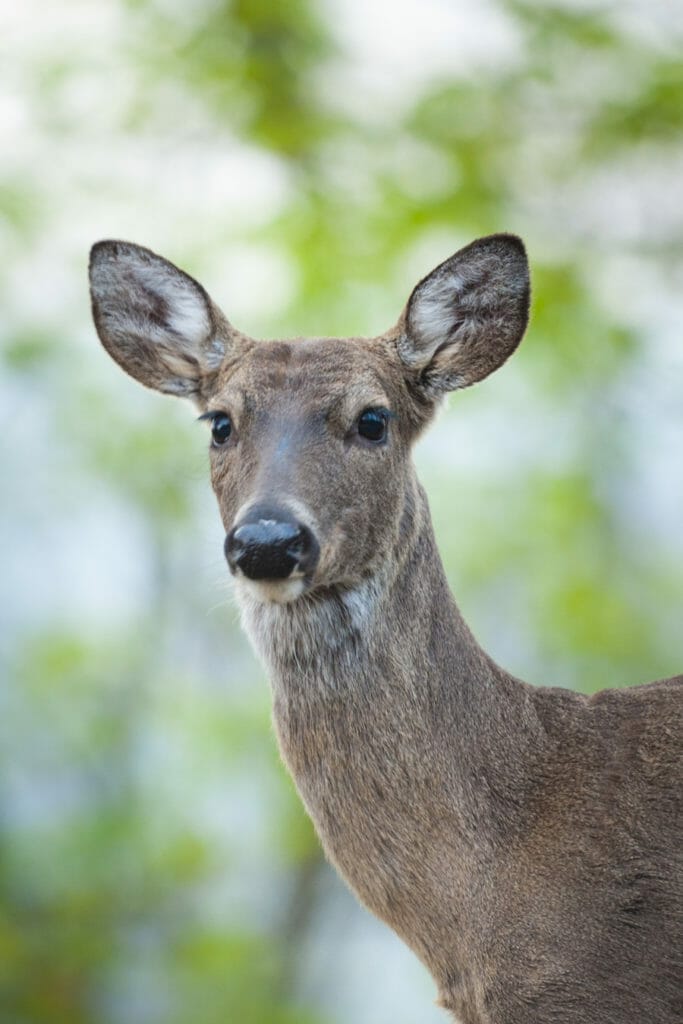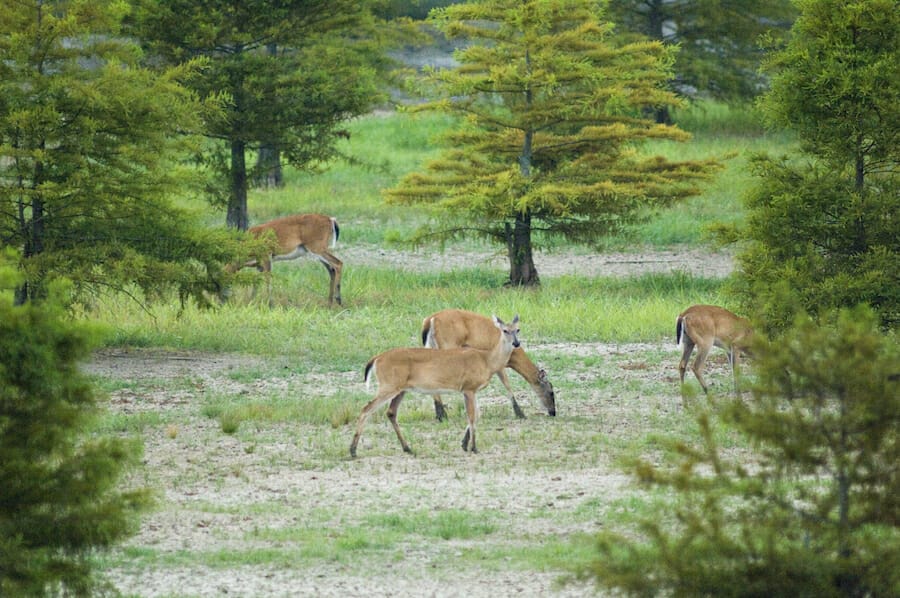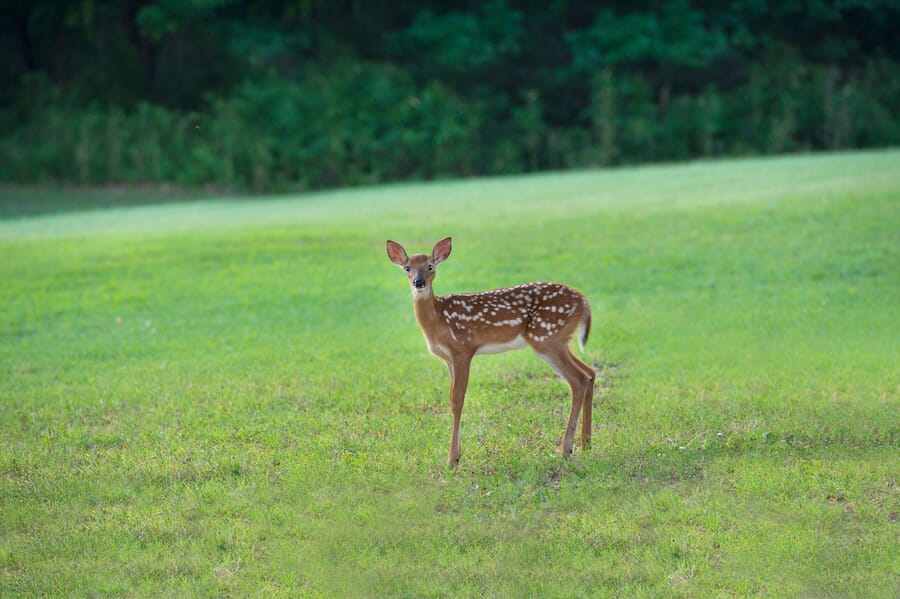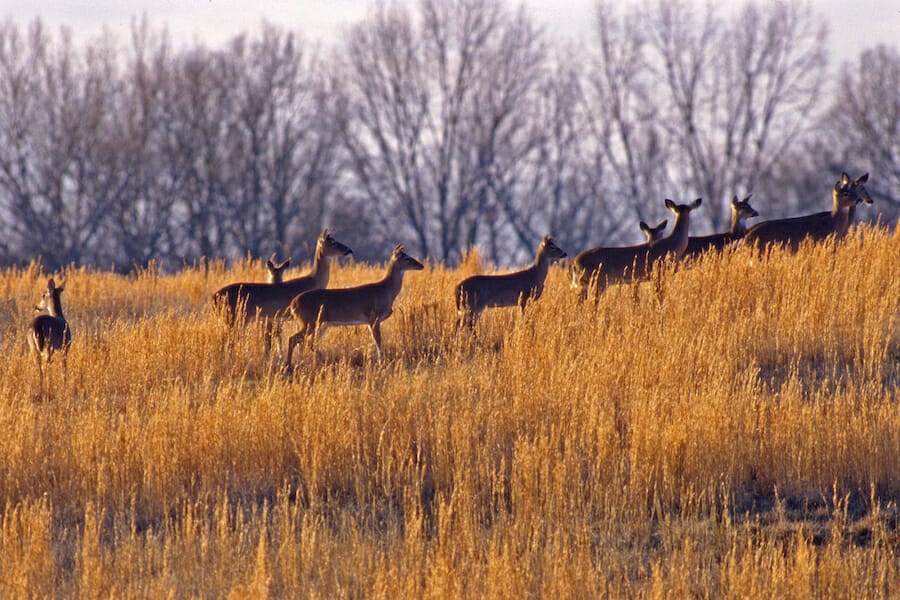

Uh oh...
It appears that you're using a severely outdated version of Safari on Windows. Many features won't work correctly, and functionality can't be guaranteed. Please try viewing this website in Edge, Mozilla, Chrome, or another modern browser. Sorry for any inconvenience this may have caused!
Read More about this safari issue.

Drive along nearly any road in Arkansas at dawn or dusk, and you will likely spot a few deer grazing in the fields along the tree line. White-tailed deer are one of Arkansas’s most frequently spotted wildlife, so it’s no wonder they were designated as the state animal in 1993. Deer play a vital role in our ecosystem and are responsible for feeding many of our state’s residents.
Importance of White-Tailed Deer
In addition to providing a beautiful glimpse into the natural world in our forests, deer significantly impact our ecology. Deer are active year-round, unlike other animals that hibernate or brumate in the colder months. They are opportunistic feeders and will munch on vegetation, acorns, agricultural crops and even your backyard garden. Deer also serve as a valuable food source for some of our larger animals, such as bobcats, coyotes and bears.

A Few Facts About White-Tailed Deer
- Arkansas is home to nearly 1,000,000 white-tailed deer.
- Typically, only male deer grow antlers, which they shed each year. There are exceptions to the rule, including one woman who killed a doe with antlers in 2014.
- Deer can run 30-40 miles per hour.
- Deer can jump over 8 feet high.
- A healthy buck can weigh up to 300 pounds.
- In Arkansas, archery season begins in September, muzzleloader season in October and modern gun season in November.
- Approximately 22,000 deer/vehicle strikes occur in Arkansas every year.
Hunting Deer
If a deer has ever visited your garden or you’ve been unfortunate enough to encounter one with your vehicle, you know there is a downside to a high population of deer. As a wildlife management tool, hunting seasons can help to maintain a balanced population of deer that is compatible with the local human population.
When a population of deer reaches high levels, we have more issues with deer/vehicle strikes, and damage to agricultural fields and gardens increases. When a population drops due to overhunting, drought or flooding, larger animals that feed on deer may begin to encroach on civilization. This can lead to euthanizing animals like bears that have learned to seek food from people rather than from nature.
For Arkansas’s native population and early settlers, white-tail deer provided essential food, and hides were used to make clothing and shelter. While hunting seasons are now necessary to help control the population of deer, many Arkansas families depend on deer to fill their freezers and feed their families. Additionally, hunters give back to the community by participating in the Arkansas Hunters Feeding the Hungry program.
If you are 16 or older, an Arkansas hunting license is required to hunt deer. A valid printed license, reusable hard card or acceptable electronic format license must be in your possession when hunting. A WMA General Use Permit is required to hunt on public land. Learn more on the Arkansas Game & Fish website.

Chronic Wasting Diseases
In February 2016, the first local case of Chronic Wasting Disease, sometimes called CWD, was discovered in an elk harvested in Newton county. A fatal neurological disease, Chronic Wasting Disease affects deer and elk and is similar to “mad cow disease” in cattle. The condition progresses slowly but can lead to weakness, abnormal behavior, excessive thirst, drooling and, ultimately, death in affected animals.
Although complete research is still lacking, there is no indication that the disease can be transmitted to other animals or humans. However, hunters should be aware if Chronic Wasting Disease has been documented in their hunting zone and follow all Arkansas Game and Fish regulations for dealing with Chronic Wasting Disease.
Chronic Wasting Disease is spread when a healthy animal has contact with an infected animal’s feces, urine, or saliva. This is another reason why hunting is essential for population control.

Finding A Fawn
In Arkansas, white-tailed deer fawns are typically born from April through June. In the proceeding months, Arkansas Game and Fish is often swamped with calls regarding well-meaning citizens who have discovered an “orphaned” deer.
Mother deer will often place their fawns in a place they have deemed safe, such as your garden, your backyard, near a hiking trail, or even in a ditch on the side of the road. The doe will wander off to feed or rest and return, sometimes hours later, to collect her fawn, who has obediently stayed put all day long. People spot these deer, not seeing the doe in sight, sometimes fearing that they have been abandoned and attempting to intervene by collecting the fawn to save it. Unfortunately, this practice often leads to deer having to be unnecessarily euthanized.
Since Chronic Wasting Disease was discovered, to help control the spread, animal rehabilitators are no longer allowed to take in or work with cervids. In other words, once the deer is collected, it will be euthanized. The best thing to do when you spot an “orphaned” deer is to leave it be. The doe is most likely nearby, and in the rare event that the mother has been hit by a car or killed, other does will often step in to care for the fawn.

Learn More
If you are interested in learning more about deer, elk or hunting in Arkansas, check out these resources.
Urban Archery Hunting
Arkansas River Valley Nature Center
Arkansas Elk Viewing 101
Photos courtesy of Arkansas Department of Parks, Heritage and Tourism.
We do the work.
You check your email.
Sign up for our weekly e-news.
Get stories sent straight to your inbox!









Like this story? Read more from Julie Kohl
There’s something about reading outdoors that makes a good book even...
Family vacations with teenagers can be a juggling act. Between sports...
There’s something magical about reading aloud, and it doesn’t have to...
Join the Conversation
Leave a Comment